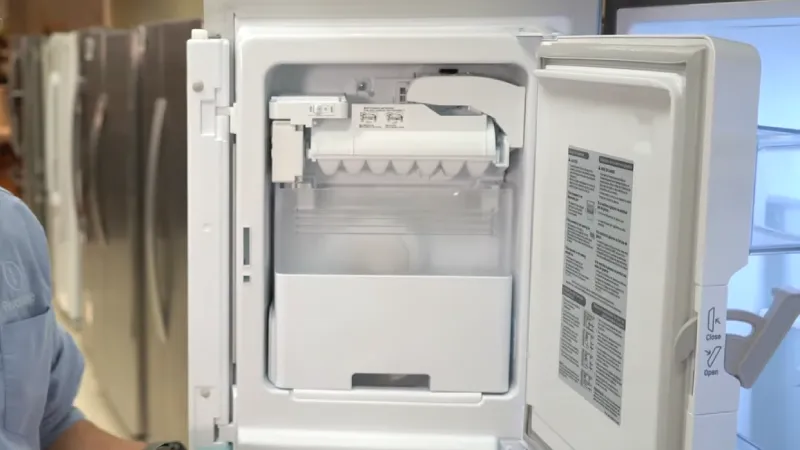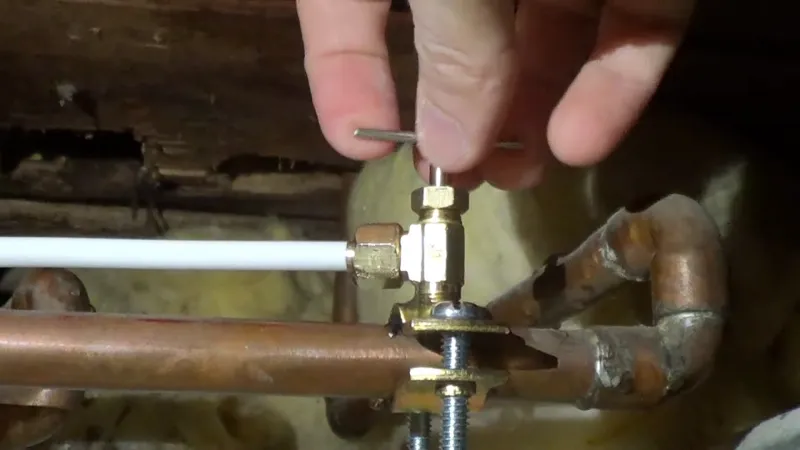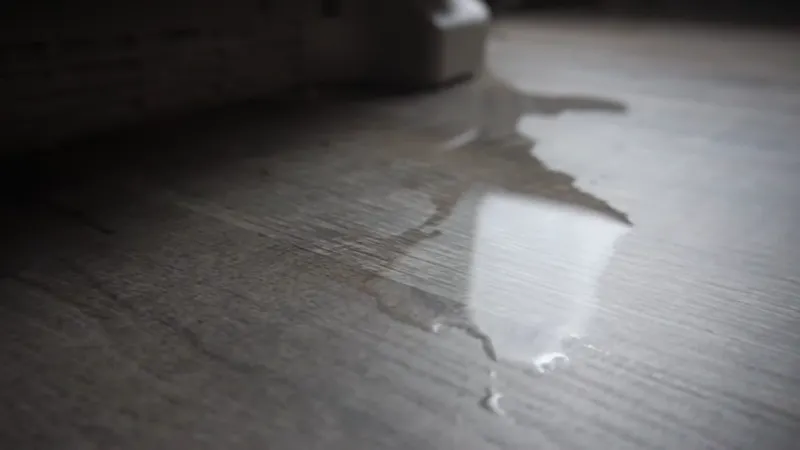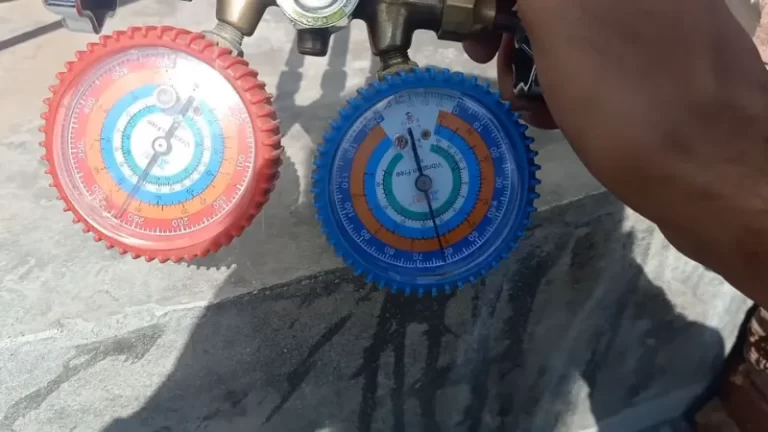GE Cafe Refrigerator Ice Maker Problems and Solutions
The GE Café refrigerator is a top-of-the-line appliance. It offers a sleek design and a wide range of features. It is designed to provide homeowners with a high-quality refrigeration experience. A key feature of the GE Café refrigerator is its ice maker. This is a convenient and essential component for many households.
A functioning ice maker is crucial for providing a steady supply of ice. It is used for beverages and other needs. However, like any other appliance, the GE Café refrigerator’s ice maker is not immune to problems. It can cause frustration if it stops working.
In this blog, we will discuss five to ten common problems. These problems may occur with the GE Café refrigerator ice maker. We will also provide solutions for each.

You'll Learn About
GE Cafe Refrigerator Ice Maker Problems
The GE Café refrigerator is a high-end appliance. It is known for its stylish design and features. However, like any other refrigerator, it can suffer from various problems. These include issues with its ice maker.
Some common problems with the GE Café refrigerator ice maker include not making ice. It may also not fill up fast enough. It might produce crushed ice or no cubes. Another issue is not dispensing ice. These issues can be caused by a variety of reasons. These include low water pressure, a faulty saddle valve, blockage in the supply lines, or faulty components.
To resolve these issues, one may need to unplug the ice maker from the socket. You may also need to disconnect the water supply. Replacing the sensor or control module might be necessary. Fixing blockages in the supply lines is another solution. It is important to seek professional assistance if you are unsure of how to fix these issues.
Problem 1: Ice Maker Not Making Ice
One of the most common issues with the GE Café refrigerator ice maker is that it stops producing ice. This can be a major inconvenience for homeowners. They rely on a steady supply of ice for their drinks and other needs. There are two primary causes for this problem. These are low water pressure and a faulty saddle valve.
Low Water Pressure
Low water pressure can prevent the ice maker from functioning properly. If the water pressure is too low, the ice maker won’t be able to fill up with enough water. This will stop it from making ice.
To check for low water pressure, you can measure the water pressure at the inlet valve. Use a water pressure gauge for this. If the water pressure is low, you may need to adjust the main water supply. This will increase the pressure.
Faulty Saddle Valve
The saddle valve is a small valve. It connects the water supply line to the refrigerator. A faulty saddle valve can cause low water pressure. It may also cause no water supply at all. If you suspect that the saddle valve is faulty, you should replace it with a new one.
Replacing the saddle valve is a relatively simple process. It can be done with basic plumbing skills and a few tools.
Solution
To fix the issue of the ice maker not making ice, you need to first check the water pressure. Check it at the inlet valve. If the water pressure is low, you can adjust the main water supply. This will increase the pressure.
If the saddle valve is faulty, you should replace it with a new one. These two steps should resolve the problem of the ice maker not making ice.
Low water pressure and a faulty saddle valve are the two primary causes. They cause the GE Café refrigerator ice maker not to make ice. Checking the water pressure and replacing the saddle valve are the two solutions for this problem.
With proper troubleshooting and maintenance, you can keep your GE Café refrigerator’s ice maker functioning properly. This will help you avoid the frustration of a lack of ice.
Problem 2: Ice Maker Not Filling Up Fast Enough
Another common issue with the GE Café refrigerator ice maker is that it is not filling up fast enough. This can result in limited ice production. It can also cause a shortage of ice for your needs. Just like the previous problem, this issue is also caused by low water pressure or a faulty saddle valve.
Low Water Pressure
Low water pressure can prevent the ice maker from filling up fast enough. The ice maker requires a sufficient water supply to function properly. Low water pressure can limit the flow of water into the ice maker.
To check for low water pressure, you can measure the water pressure at the inlet valve. Use a water pressure gauge for this. If the water pressure is low, you may need to adjust the main water supply. This will increase the pressure.
Faulty Saddle Valve
The saddle valve is a small valve. It connects the water supply line to the refrigerator. A faulty saddle valve can cause low water pressure. It may also cause no water supply at all. If you suspect that the saddle valve is faulty, you should replace it with a new one.
Replacing the saddle valve is a relatively simple process. It can be done with basic plumbing skills and a few tools.
Solution
To resolve the issue of the ice maker not filling up fast enough, you need to first check the water pressure. Check it at the inlet valve. If the water pressure is low, you can adjust the main water supply. This will increase the pressure.
If the saddle valve is faulty, you should replace it with a new one. These two steps should resolve the problem of the ice maker not filling up fast enough.
Low water pressure and a faulty saddle valve are the two primary causes. They cause the GE Café refrigerator ice maker not to fill up fast enough. Checking the water pressure and replacing the saddle valve are the two solutions for this problem. With proper troubleshooting and maintenance, you can keep your GE Café refrigerator’s ice maker functioning properly. This will help you avoid the frustration of limited ice production.
Problem 3: Crushed Ice or No Cubes
Ice makers play an important role in modern refrigerators. They provide us with ice cubes whenever we need them. Unfortunately, at times, the ice maker may not perform up to our expectations. We might end up with crushed ice or no cubes at all.
This can be frustrating. It is especially frustrating if you’re looking forward to a cold drink on a hot day. In this section, we will discuss two common causes and solutions for this problem.
Cause: Clogged Ice Maker
A clogged ice maker can cause the ice to break apart when it is being dispensed. This results in crushed ice instead of cubes. A clogged ice maker is usually caused by frozen food particles or dirt. These get into the system and prevent it from working correctly. This can be a quick fix. All you need to do is clean the ice maker.
Solution: Clean the Ice Maker
To clean the ice maker, unplug the refrigerator and remove the ice bucket. Then, use warm water and a mild detergent to clean the ice maker. Clean the blades and the area around them.
Rinse thoroughly with water and let it dry completely. Once dry, put the ice bucket back in place. Plug the refrigerator back in.
Cause: Low Water Pressure
Low water pressure can prevent the ice maker from filling up fast enough. It can also produce cubes that are too small. This could be due to a malfunctioning water valve. It could also be due to a restriction in the water line.
Solution: Check the Water Pressure
To check the water pressure, locate the water valve that supplies water to the ice maker. Turn it off. Then, attach a pressure gauge to the inlet side of the valve. Turn it on.
The gauge should read between 20 and 120 psi. If the water pressure is too low, you may need to replace the water valve. You may also need to have a plumber check for a restriction in the water line.

If you’re facing problems with your GE Café refrigerator ice maker producing crushed ice or no cubes, the solutions are usually simple. Checking the water pressure and cleaning the ice maker can solve most of these issues. If the problem persists, it may be a more serious issue. You should seek professional help.
Problem 4: Ice Not Dispensing
The GE Café refrigerator ice maker is an essential part of the kitchen appliance. It dispenses ice cubes to be used for drinks, cooking, and other purposes. However, a problem that often arises is when the ice dispenser is not functioning properly.
This can be due to a number of reasons. These include a jammed ice dispenser or a clogged ice chute.
Jammed Ice Dispenser
The ice dispenser can get jammed if the ice cubes get stuck inside it. This can be caused by ice cubes not dropping into the dispenser. This causes a blockage.
Clogged Ice Chute
The ice chute is the path that the ice cubes follow to get to the dispenser. If the chute becomes clogged, the ice cubes will not be able to pass through. This causes a blockage.
Solution
Clean Ice Dispenser
To clean a jammed ice dispenser, turn off the ice maker and unplug the refrigerator. Then, remove any ice cubes that are stuck inside the dispenser. Use a soft brush or cloth to clean any residue inside the dispenser.
Clear Ice Chute
To clear a clogged ice chute, turn off the ice maker and unplug the refrigerator. Then, remove any ice cubes that are blocking the chute. Use a soft brush or cloth to clean any residue inside the chute.
If the chute is still clogged, use a straightened coat hanger to clear the blockage.
The GE Café refrigerator ice maker is an essential part of the appliance. When it is not functioning properly, it can be a source of frustration. If your ice dispenser is not functioning properly, it is likely due to a jammed dispenser or a clogged ice chute.
These problems can be easily fixed by cleaning the dispenser and clearing the chute. If the problem persists, it is best to call a professional for further assistance.
Problem 5: Ice Maker Overproducing Ice
The GE Café refrigerator is a high-end appliance. It is designed to provide a variety of features, including an ice maker. However, even the best appliances can experience problems. The ice maker is no exception. One common issue is when the ice maker overproduces ice.
Causes
Faulty Control Module
The control module is responsible for regulating the ice production cycle. If it becomes faulty, the ice maker may overproduce ice.
Damaged Sensor
A damaged sensor can also cause the ice maker to overproduce ice. The sensor monitors the ice bin. It sends a signal to the control module when it is full. If the sensor is damaged, it may not send the correct signal. This causes the ice maker to overproduce ice.
Solution
Replace Control Module
If the control module is faulty, it will need to be replaced. This can usually be done by a professional. It may require removing the ice maker from the refrigerator.
Replace Sensor
If the sensor is damaged, it will need to be replaced. This can also usually be done by a professional. It may require removing the ice maker from the refrigerator.
If you experience the issue of your GE Café refrigerator’s ice maker overproducing ice, it may be due to a faulty control module or a damaged sensor. In either case, it is recommended to seek professional help. They can diagnose the issue and make the necessary repairs. By doing so, you can ensure that your ice maker continues to function properly. It will provide you with the ice you need.
Problem 6: Ice Maker Leaking Water
The ice maker is a crucial part of your GE Café refrigerator. It ensures that you always have a steady supply of ice for your drinks and food. However, if the ice maker starts to leak water, it can quickly turn into a major problem. There are two common causes of an ice maker leaking water. These are a damaged water line and a clogged drain.

Damaged Water Line
One of the most common causes of an ice maker leaking water is a damaged water line. The water line is the tube that supplies water to the ice maker. It comes from the main water supply.
If this line becomes damaged, water can leak out. This can cause damage to your refrigerator and surrounding area. This damage can be caused by a variety of factors. These include corrosion, cracks, or kinks in the line.
Solution: Replace the Water Line
If you suspect that the water line is damaged, the best solution is to replace it. This will require the services of a professional technician. The water line is connected to the main water supply. The technician will be able to assess the extent of the damage. They will replace the line with a new one. This ensures that the ice maker will no longer leak water.
Clogged Drain
Another common cause of an ice maker leaking water is a clogged drain. The drain is responsible for removing any excess water. This water may accumulate in the ice maker. If the drain becomes clogged, water can build up. It can start to leak out.
This is usually caused by a buildup of dirt and debris. This debris accumulates in the drain over time.
Solution: Clear Drain
To fix a clogged drain, the first step is to locate the drain. Clear any debris that may be blocking it. You can use a small brush or a straightened coat hanger to clear the drain.
If the clog is severe, you may need to use a plumbers snake or a specialized drain cleaning tool. Once the drain is clear, the ice maker should no longer leak water.
If your GE Café refrigerator’s ice maker is leaking water, it is essential to diagnose the problem. Take action to fix it. Whether it is a damaged water line or a clogged drain, the solutions are straightforward. They can be done with the help of a professional technician if necessary.
By taking the time to fix this problem, you can ensure that your ice maker will work correctly. Your refrigerator will continue to provide you with a steady supply of ice.
Conclusion
A malfunctioning ice maker can be a major inconvenience for GE Café refrigerator owners. The common problems range from not making ice to overproduction. They also include crushed ice and leaking water. These can be caused by a variety of factors. These include low water pressure, faulty components, clogs, and damaged parts.
However, with proper maintenance and troubleshooting techniques, these issues can be resolved. Regular cleaning, checking for clogs, and inspecting the water line and drain can prevent problems from occurring.
In the event of a problem, it is essential to diagnose the root cause. Take appropriate action. This could be cleaning, replacing parts, or seeking professional assistance. With a functioning ice maker, GE Café refrigerator owners can enjoy an uninterrupted supply of ice. This ice is for their drinks and meals.


